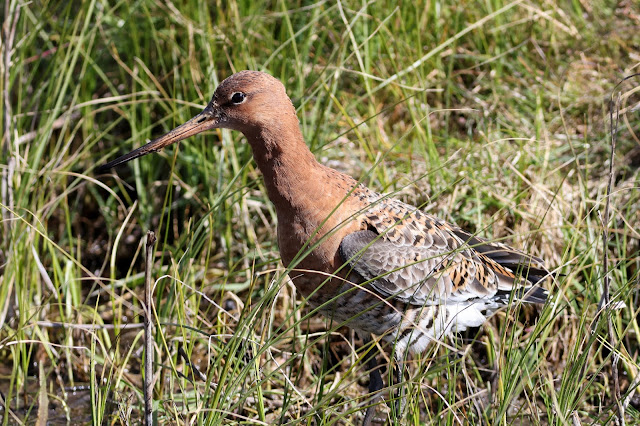22nd April 2021
Our visits to Oare Marshes are normally in August when the water levels are dropped for the passage waders, so today was going to be a totally different experience. There was unlikely to be much of a high tide roost so tide times were less important and therefore we decided to start at the slipway then walk around the sea wall and eventually ending up overlooking the east flood when the sun had gone round in the afternoon.
At the slipway the tide was in so no mud visible at the present and the only bird present on the rocks was a rather splendid Pied Wagtail. There were also, however, a couple of Black-headed Gulls feeding on insects from the surface of the water just off the sea wall.
At that point a point a pair of Oystercatchers came off the fields to fly to an area of newly exposed mud.
It was fairly quiet further round the sea wall by Faversham Creek although a number of Linnets and Sedge warblers were singing away, staking out their territory
The water levels on east flood are kept high at this time of year to prevent the growth of vegetation so there will be plenty of bare mud in the autumn, but there was still plenty of interest. First up was a Grey Heron which flapped lazily over to one of the islands that were barely above water. Duck numbers were well down, although there was still a couple of Teal present.
What did surprise me, however, was the number of Black-tailed Godwits still present and all now in their immaculate summer plumage and providing an aerial display every time a Peregrine flew over.
What I love about Black-tailed Godwits is that in general they are very confiding and provide some great opportunities for some close-up shots.
But the stars of the show today were the Whimbrel. Oare Marshes is always a good place to see Whimbrel on autumn passage and from today's showing on spring passage as well. What was particularly surprising was that out of the dozen or so birds spread out along the Swale shoreline not a single bird was a Curlew, and for a change today they were coming much closer rather that keeping to the water's edge.
For some reason they were favouring the maritime grasses growing higher up the beach which made life a bit more difficult as on occasion they would totally disappear.
Well, what another fantastic day at Oare Marshes and in future I am sure that our visits to this amazing site will not be confined to the autumn.

































No comments:
Post a Comment
Note: only a member of this blog may post a comment.